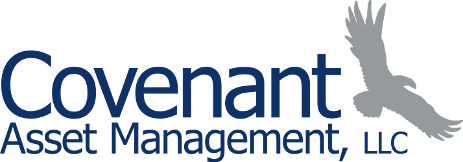WHAT YOU LOSE BY NOT USING YOUR ADVISOR
By Mark Ukrainskyj in Trusted Advice
In the first part of this blog post, we discussed how much an investor can lose in the portfolio construction process if they don't use a good advisor as calculated in a Vanguard Group paper from 2014. We also discussed how Covenant approaches those aspects of the portfolio construction process to add that value for our clients. The parts of the study discussed previously showed a loss of anywhere from 40 basis points (0.40%) to 115 basis points (1.15%) a year depending upon the clients' tax bracket and asset mix. This did not include any value from the correct asset allocation or a total return approach, which were deemed significant, but not quantifiable. In this part, we move on to the Wealth Management and Behavioral Coaching services described in the study and that Covenant provides.
Rebalancing
A critical aspect of the client's Investment Policy Statement (IPS) is the asset allocation of the portfolio. This should be based on the client's situation, including risk tolerance, goals and time horizon. At Covenant, once we agree with the client on the overall strategy and asset allocation, as asset managers, we are responsible for the day to day implementation of that strategy, including rebalancing the portfolio to within reasonable tolerances of the targeted allocations. This helps keep the asset allocations in line and the portfolios moving towards the client's goals.
In an unrebalanced portfolio, the asset allocation will tend to drift out of line if any particular asset class outperforms the others. As equities have tended to outperform over the long term, not rebalancing would increase the risk profile. The Vanguard study showed that an unrebalanced 60% stock/40% bond portfolio had a similar risk profile but lower return profile than a rebalanced 80% stock/20% bond portfolio. This demonstrated that not rebalancing could cost an investor 35 basis points (0.35%) of additional value a year.
Which Account(s) should you draw from for your cash flow needs?
When you start drawing down on your portfolio, you may have several options as to where to pull the money from. Taxable or tax advantaged account first? Where do Roth IRA's fit in? How do RMD's come into play? Pension plans and 401k's? The various tax implications can make a big difference in which accounts to draw from first. And that sequence can change if your situation, or the tax laws change. Your trusted Covenant advisor works with you to determine the best course of action to try and minimize the overall taxes paid based on your individual situation. There are many factors that go into this analysis, including current and expected marginal tax brackets, asset allocation, and split between taxable and tax advantaged accounts. Quite a lot to keep track of, and according to the study, getting the sequence wrong can cost an investor up to 110 basis points (1.1%) annually.
Behavioral Coaching
For anyone who has lived through investing over the last 20 or so years (the tech bubble and burst, the real estate boom, the financial crisis, etc.), it appears pretty obvious, that most investors are not completely rational when it comes to their money and subject to many behavioral biases. We discussed some aspects of this issue in a prior post including the availability heuristic, or recency bias, overconfidence, confirmation and hindsight bias and anchoring. In total, these biases can have a tremendous effect on your returns by among other things making investors deviate from their long term plan.
The study measured it in two ways. First by comparing the performance of over 50,000 self directed Vanguard IRA investors over 5 years to relevant target date funds (as a proxy for disciplined diversified investing). The average investor that made an exchange into a different fund trailed the benchmark by an average of 150 basis points (1.5%). The second way was to compare investor returns (internal rates of return) to fund returns (time weighted returns). This shows that depending upon style or strategy, the drag can be anywhere between 138 basis points (1.38%) and 228 basis points (2.28%). So by not sticking to a plan and chasing the latest hot fund or style, investors can really hurt their performance.
As a trusted advisor on your financial team, one of our roles is to keep you on track and on plan. We have seen the damage that can be caused to a portfolio by a fear or greed inspired shift in allocation. That is why we counsel that your asset allocation should only change when your situation changes, not when the market changes. In addition to multiple MBA's and CFA's, at Covenant we bring our over 100 combined years of investment management experience to bear in managing your portfolio. We have managed client money through several different markets giving us a broad perspective that allows us to be measured in our changes to the portfolio and not get caught up as easily in the emotions of the moment. According to JPMorgan, over the last 37 years, despite averaging an intra-year drop of 14.2%, the stock market has posted positive returns in 28 of those years. So even in the good years, there are times that can shake an investor's confidence. The guidance we provide can help get you and your portfolio, through difficult times without making rash decisions and thus hurting your returns.
In total, the study showed that not using an advisor can cost investors anywhere from 225 basis points (2.25%) to 410 basis points (4.1%) in value a year depending upon the client situation. With returns like these, who wouldn't use an advisor?
